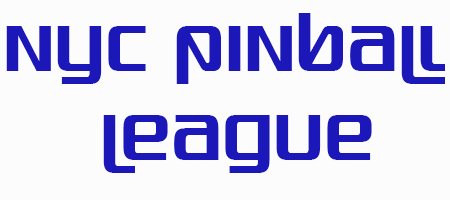The Whiteboard’s Silent Scream: Where Great Ideas Go to Die
The faint, lingering scent of dry-erase marker hung in the air, a phantom limb of a meeting that had just concluded.
It felt like 1 hour ago, maybe 11. Maybe 21. The whiteboard, moments before a vibrant canvas of possibility, now stood pristine and stark, a clean slate for the next burst of inspiration that, statistically, had a 71% chance of ending up just like the last.
Someone, probably the intern, had diligently erased the brilliant concepts, the revolutionary strategies, the elegant solutions to long-standing problems. All of it. Vanished. Not with a bang, but with a whisper of Windex and a soft cloth. This isn’t a rare occurrence, is it? This is the Good Idea Graveyard, a vast, unmarked expanse where the most potent, game-changing thoughts your company ever conjures go to die a quiet, bureaucratic death.
I used to think, in my earlier, more idealistic phase, that if an idea was truly brilliant, its inherent light would guide it. That it would somehow just *manifest*. What a laugh that gives me now, a dry, cynical little chuckle that tastes of burnt coffee and forgotten project plans. Reality, I’ve learned, is far more mundane and far more brutal. Brilliance, absent ownership, is just a fleeting thought, a wisp of smoke, destined to dissipate.
Emma A., a digital archaeologist I know, once described her role as unearthing the digital remains of projects that were ‘great ideas’ but never saw the light of day. She’d sift through old shared drives, forgotten Trello boards, and archived Slack channels, looking for the digital fossils of innovation. Her findings were often heartbreaking, a treasure trove of genuinely transformative concepts, complete with detailed plans and enthusiastic early-stage feedback, all abandoned somewhere between ‘let’s explore this further’ and ‘who is championing this now?’ It’s a sad, predictable pattern, a recurring nightmare on repeat for at least 11 different companies she’s observed.
The Erosion of Spirit
This isn’t just about lost opportunities for the business; it’s about a deeper, insidious erosion of spirit. When good ideas consistently die, it sends a clear message to your most passionate, creative employees: “Don’t bother.” It’s a slow, silent killer of innovation that drains the very lifeblood from those who genuinely care, the ones who wake up with that spark of wanting to make things better. I’ve heard it said that a company with 101 such graveyards isn’t just stagnant; it’s actively driving its best minds away. And if you’ve ever had a splinter, that tiny, insistent pain that won’t go away until you root it out with precision, you understand the constant irritation of unaddressed potential.
Lost Potential
Drained Spirit
The Paradox of Ideation
One of the contradictions I’ve wrestled with is the necessity of open ideation versus the pragmatic need for gatekeepers. You need a space where every voice can contribute, a truly democratic forum for ideas. But then, you need a ruthlessly undemocratic process for selecting and resourcing a select few. It feels wrong, like criticizing the very act of thinking, yet it’s essential for survival. My earlier self would rail against such rigidity, but now, I understand it as a harsh necessity, a filtering mechanism that, when done right, preserves the *best* ideas instead of just letting them all drown.
The real problem isn’t the gate; it’s the lack of a proper, well-oiled launchpad *after* the gate. It’s the vague hand-off, the implicit assumption that *someone* will pick it up. We’ve all been in that meeting where the CEO or a senior leader gets excited about a concept, makes a mental note, and then moves on to the next urgent fire, leaving the ‘great idea’ dangling, an orphaned thought with no parent. No one is assigned. No budget is allocated. No clear owner emerges. Just a collective, silent agreement that it’s ‘a good thing,’ which quickly becomes ‘a thing nobody does.’
Frictionless Execution
Consider the difference when a concept has immediate, tangible pathways to implementation. Imagine a design team brainstorming aesthetic and functional enhancements for an office space. They dream up innovative uses of natural light, biophilic elements, and modern acoustic treatments. If their ideas, especially those focusing on practical improvements, can be instantly translated into actionable plans and material selections, the metabolism shifts.
For instance, when considering noise reduction and visual appeal, being able to quickly integrate solutions like acoustic slat wall panels makes the leap from abstract concept to concrete reality immediate. It moves from “what if?” to “how soon can we install this?” This is where the idea graveyard finds its natural enemy: the frictionless path to execution.
Failure Rate
Execution Rate
The Prototype’s Fate
I recall a situation at a client where we proposed a completely new onboarding flow. It was meticulously planned, had buy-in from 41 people, and even had a prototype. The entire leadership team loved it, praised its elegance, and thanked us profusely. And then… nothing. For 1 whole quarter, it sat. Everyone agreed it was *the* way forward, but the project manager assigned to it was buried under 1,001 other ‘urgent’ tasks. The budget that was vaguely promised never materialized beyond an initial $171, and the champions who initially loved it moved on to other roles or priorities. Eventually, the prototype gathered dust, the documentation became outdated, and the energy that fuelled it simply bled out. A truly extraordinary idea, deflated like a punctured balloon. My mistake then was not insisting on a dedicated owner with explicit time and budget allocations. I assumed the ‘goodness’ of the idea was enough, which was an unforgivable oversight. I acknowledge this. It’s an error I won’t make again, not 1 single time.
Onboarding Flow Progress
0%
An extraordinary idea, deflated like a punctured balloon.
The Remedy: Idea Metabolism
So, what’s the remedy for this plague of the idea graveyard? It’s not more brainstorming, though that certainly has its place. It’s about building an ‘idea metabolism’ into your company’s very DNA.
It means asking, not just ‘Is this a good idea?’ but ‘Who *owns* this idea, from inception to execution, and what resources do they have?’ It means creating a culture where execution isn’t an afterthought, but the very heartbeat of innovation. Because otherwise, the silence of the erased whiteboard will continue to be the loudest sound in your organization, a mournful dirge for all the brilliance that could have been, leaving nothing but a lingering, slightly chemical scent, and a profound, quiet emptiness.



